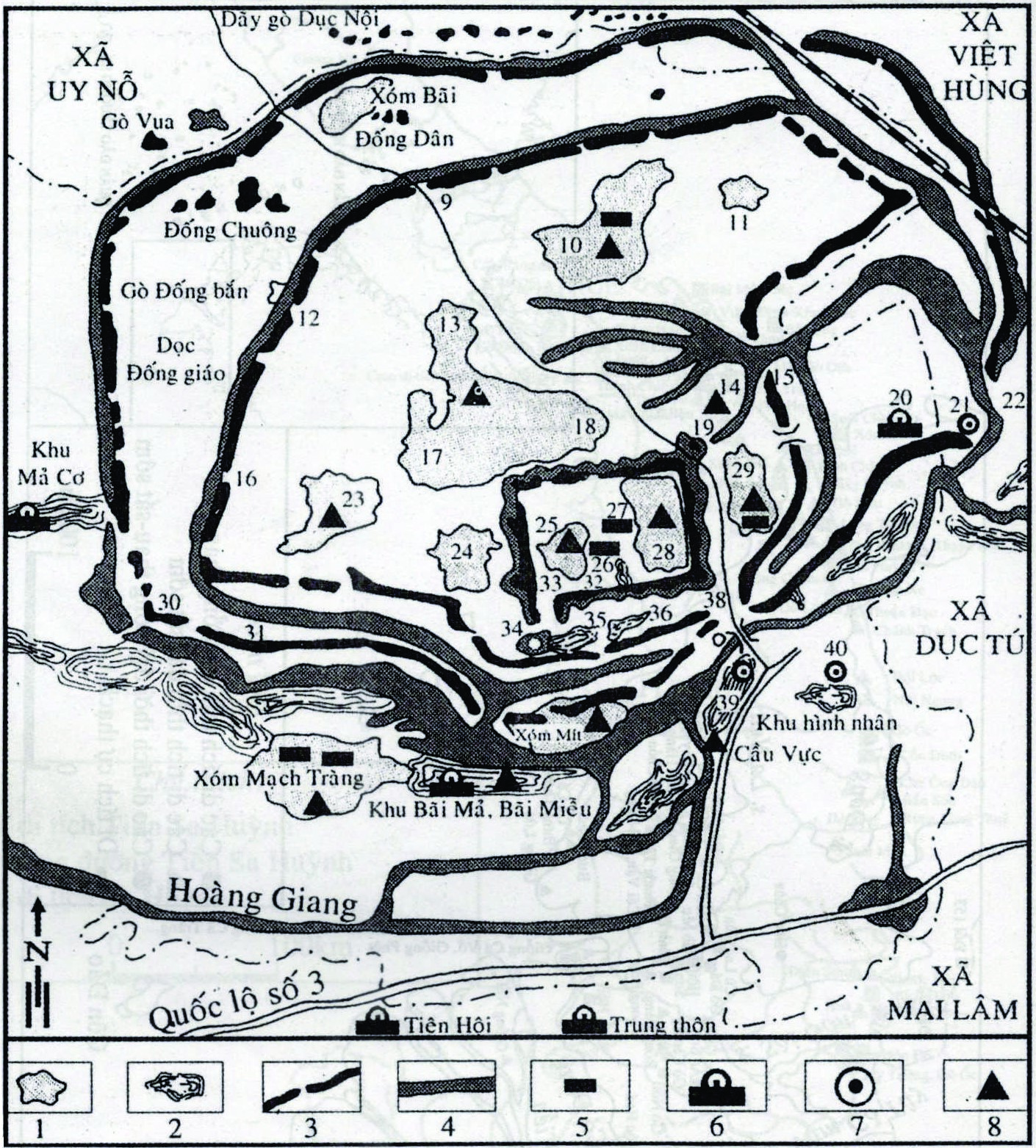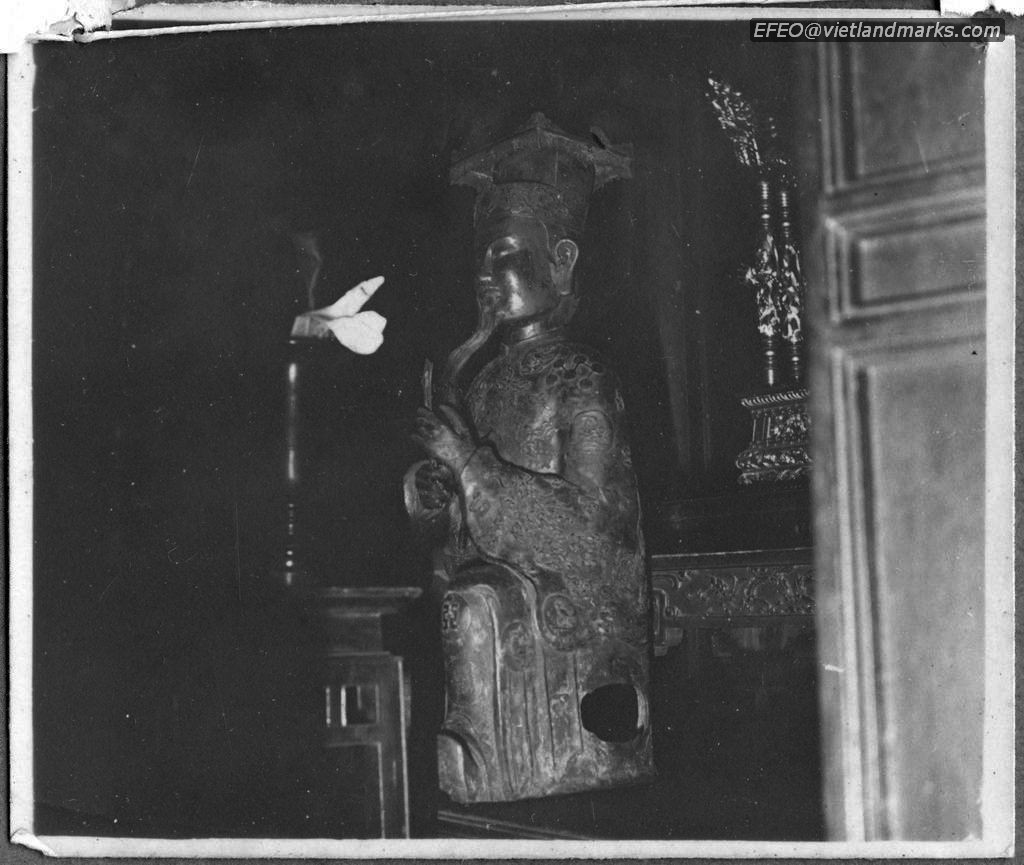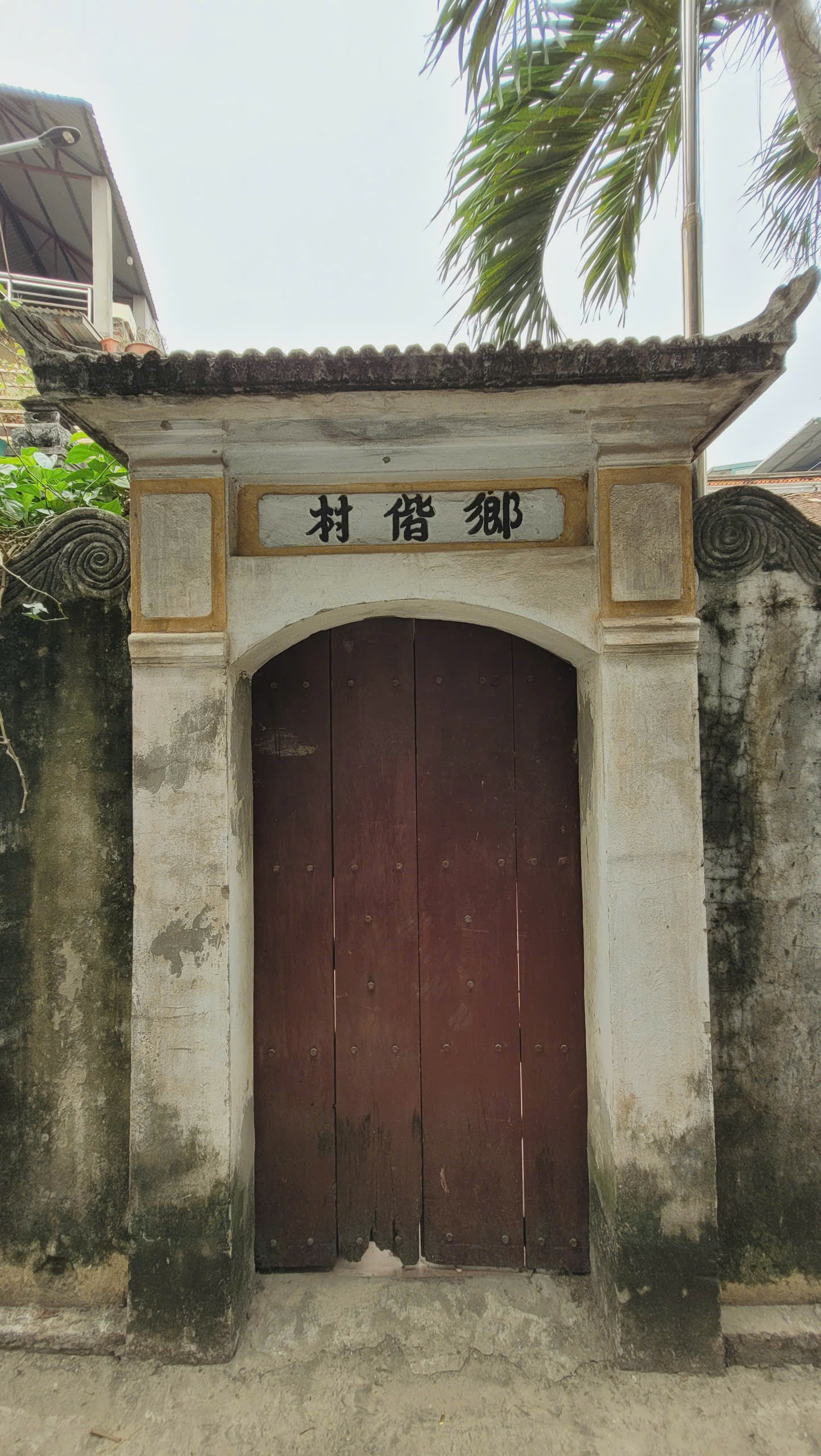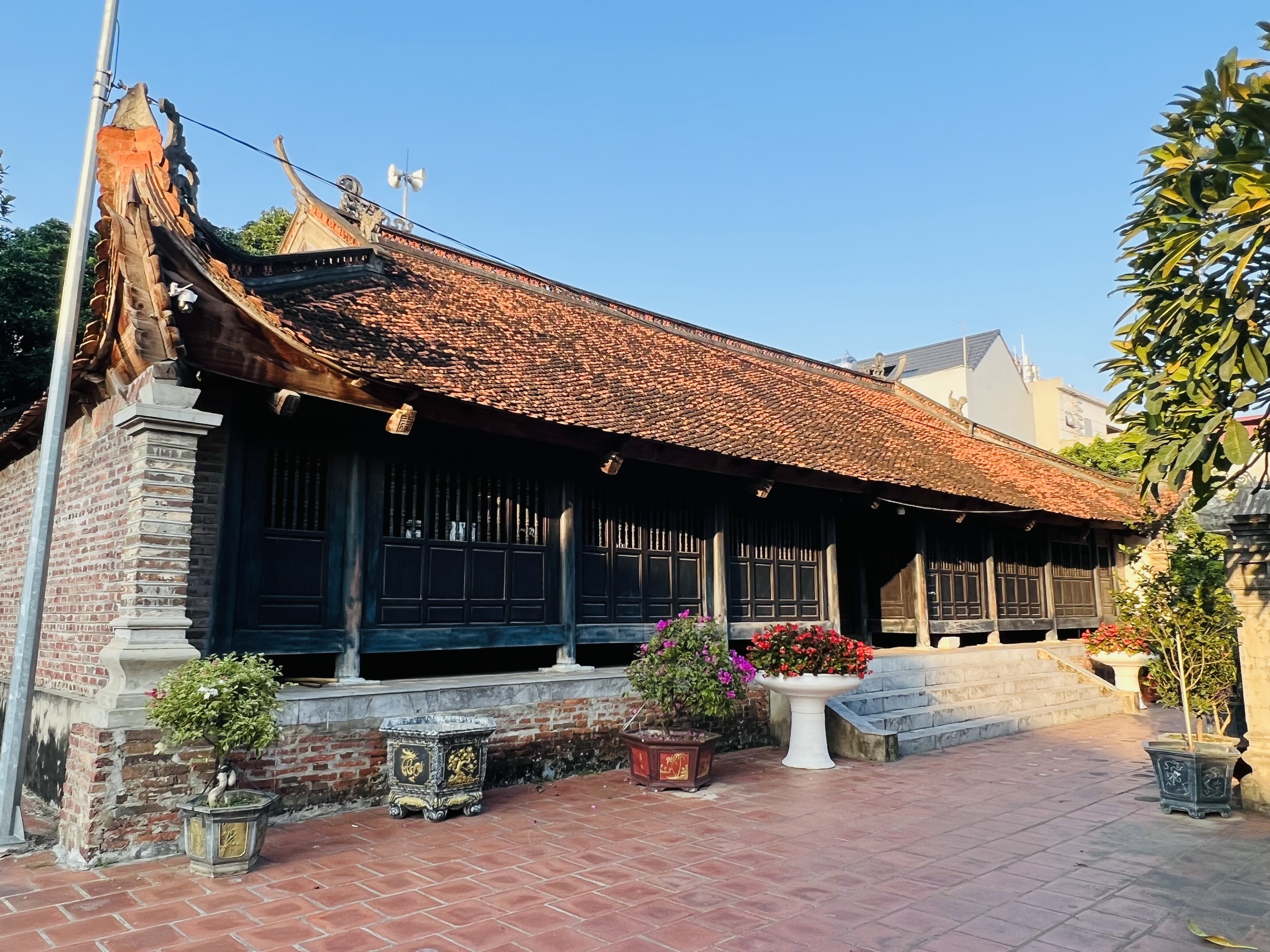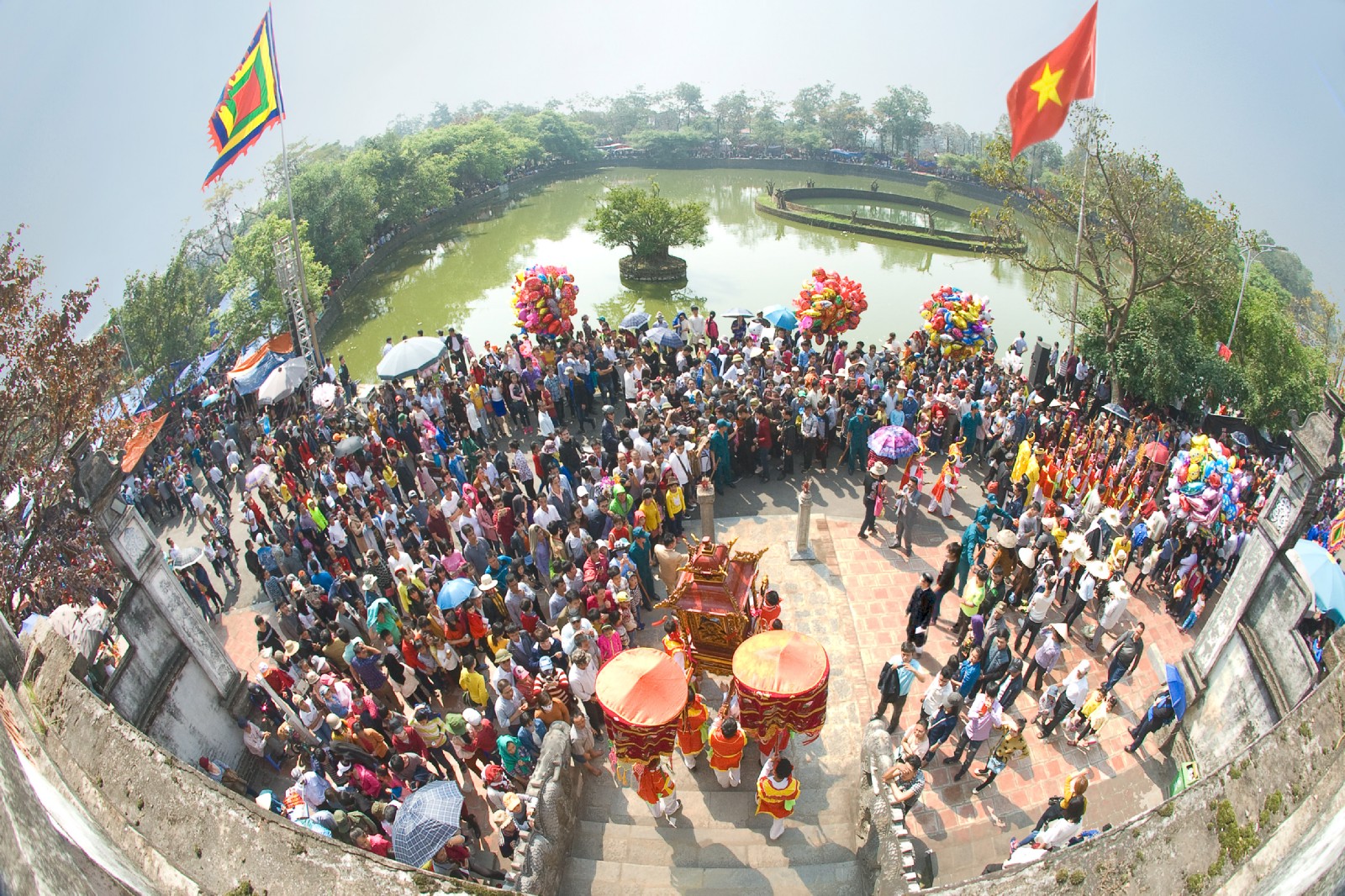
On February 3, 2021, Co Loa festival was registered in the List of National Intangible Cultural Heritage in Decision No. 603/QD-BVHTTDL of the Ministry of Culture, Sports and Tourism.
Co Loa festival practice space
Co Loa festival, also known as Loa Thanh eight-village festival or Ho Nhi eight-village festival, is a type of traditional festival with the central festival practice space in the inner citadel area of Co Loa commune. The festival space includes a complex of architectural relics of temples, communal houses, "am", and diaries, places of worship for King An Duong Vuong, My Chau, god Kim Quy, General Cao Lo and related characters.
Cultural subject of Co Loa festival
The cultural subject of Co Loa festival is a community of residents of 8 communes, worshiping An Duong Vuong, today they are 8 villages (belonging to 3 communes: Co Loa, Uy No, Xuan Canh), including Co Loa, Van Thuong, and Mach Trang, San Gia, Outer Sat, Dai Bi, Cau Ca, Thu Cuu.
 Distribution map of the intangible cultural heritage of Co Loa festival in Bat commune, Loa Thanh
Distribution map of the intangible cultural heritage of Co Loa festival in Bat commune, Loa Thanh
The establishment and development of Co Loa festival
Co Loa Temple (also known as Thuong Temple or An Duong Vuong Temple), worships King An Duong Vuong - the successor of Hung Vuong dynasty, who founded Au Lac state, moved the capital from Phong Chau (White Crane Viet Tri, Phu Tho) to Co Loa. This is the place where the citadel was built, ramparts against the enemy, and national sovereignty was protected, from 208 - 179 BC. In legend, January 6th is the day Thuc Phan entered the palace, on January 9th he was crowned and gave away all the soldiers. To remember the merits of the king, the villagers of Co Loa and other villages in the area worshiped King An Duong Vuong, taking January 6 as the festival date.
Time of Co Loa festival
Previously, Co Loa festival was held regularly every 3 years to 5 years for 12 days, from January 6 to 18. If it is the year of "phong đang Hoa Coc", Co Loa opens a very large festival. After 1952, "Ho Nhi eight villages" is no longer participated in the festival, Co Loa village maintains organize a small-scale village festival, simple rituals, sacrifices, and some folk games. By 1990, Co Loa festival was gradually restored and held annually with the participation of the community of eight village residents of Loa Thanh. Currently, the festival is held for 2 days (May 5 - 6), on the 6th is the main festival. After January 6, the remaining 7 villages in the " Ho Nhi eight villages" hold festivals in their villages until January 18.
Preparations for the festival
Vote (recommendation) authority (Thu Tu) selected 2 authorities to take care of "clean grass - red incense" in Thuong temple, My Chau.

Authority does ceremony at Thuong temple
Meeting of eight village Councils: Also held at the beginning of December, after the authority election is completed, to assign specific tasks and take care of finance to organize Co Loa festival. Based on village and commune conventions, there are strict regulations such as practicing sacrifices, carrying out palanquins, preparing sacrifices, performing rituals: sack sai, horse procession.
 Meeting of subcommittees and ceremony department
Meeting of subcommittees and ceremony department
The main day of the festival: January 6
Ceremony part:
According to legend, when King An Duong Vuong chose Co Loa as the site to build the capital, the people of Quay village gave up their land for the king to build the citadel. Therefore, although the village of Quay is not named in the Eight Villages, because it is a native of Co Loa, it is respected as the elder brother of the Quay. They are invited to attend the festival and perform the secret recitation ceremony, other villages have to come out to welcome them.
From early in the morning, villages process their palanquins to Co Loa village on both sides. The West (to the right of Thuong Temple) is concentrated in the Outer citadel, including the villages of Mai Trang, San Gia, Dai Bi, and Cau Ca. The east (to the right of Thuong Temple) is concentrated at Sa market, including Van Thuong - Ngoai Sat - Thu Cuu villages. At 7 a.m, according to the drum command, the two processions entered the Thuong temple together to the western end of the lake, then the two groups merged into one, arranged in the order Van Thuong - Mach Trang - San Gia - Ngoai Sat - Dai Bi - Cau Ca - Thu Cuu entered the Upper Dragon courtyard.

The procession of villages to the Upper Temple
The two old masters who play master drum and a gong will be performed with "3 hoi 9 tieng" (3 sections and 9 times of drum) to open the festival. Elder Quay read the greetings, do the ceremony and read the secret words, performed at the mat on the front door of the temple.

Elders Quay perform the secret recitation ceremony
The next one is the Council liturgical in Co Loa which took place over two hours through 67 chants. This is the most important ritual in the part of the Co Loa festival. And it's also the opportunity to glory natural spirits, showing gratuity to them, hoping them to accompany villagers to have peaceful, happy and prosperous long lives.
 The Council liturgical in Co Loa
The Council liturgical in Co Loa
After the ceremony, the procession of Bat Commune palanquin from Thuong Temple went around Ngoc well lake, to the east to the intersection, the procession of Co Loa village went straight to Ngu Trieu Di Quy communal house and stayed there. In the afternoon, Co Loa sacrifices at the communal house and then carries the palanquin to the temple. The remaining villages in Bat Commune turn left to the southwest road through the temple gate, especially Van Thuong and Ngoai Sat villages turn to Sa market to go to the communal house of each village.
 Eight Villages palanquin procession
Eight Villages palanquin procession
Festival part
Co Loa festival has a rich and attractive system of folk games and performances containing cultural beauty and national traditional values, such as crossbow shooting, first swing, wrestling, human chess, Tuong singing, Water puppetry... attracted a large number of people from all walks of life.
 Human chess game
Human chess game
 Traditional wrestlin
Traditional wrestlin
Crossbow shooting
Co Loa festival contains the value of folk knowledge. Rituals, processions, games, performances, and food are scientific treasures about the value of people's thinking from ancient times until now. The festival is also an opportunity to educate children and grandchildren's gratitude for the merits of King An Duong Vuong and at the same time educate the younger generation in patriotic traditions, always being on high alert against all plots against the independence. and building socialism by hostile forces in the current period.
MANAGEMENT DEPARTMENT OF CỔ LOA VESTIGE SITE
